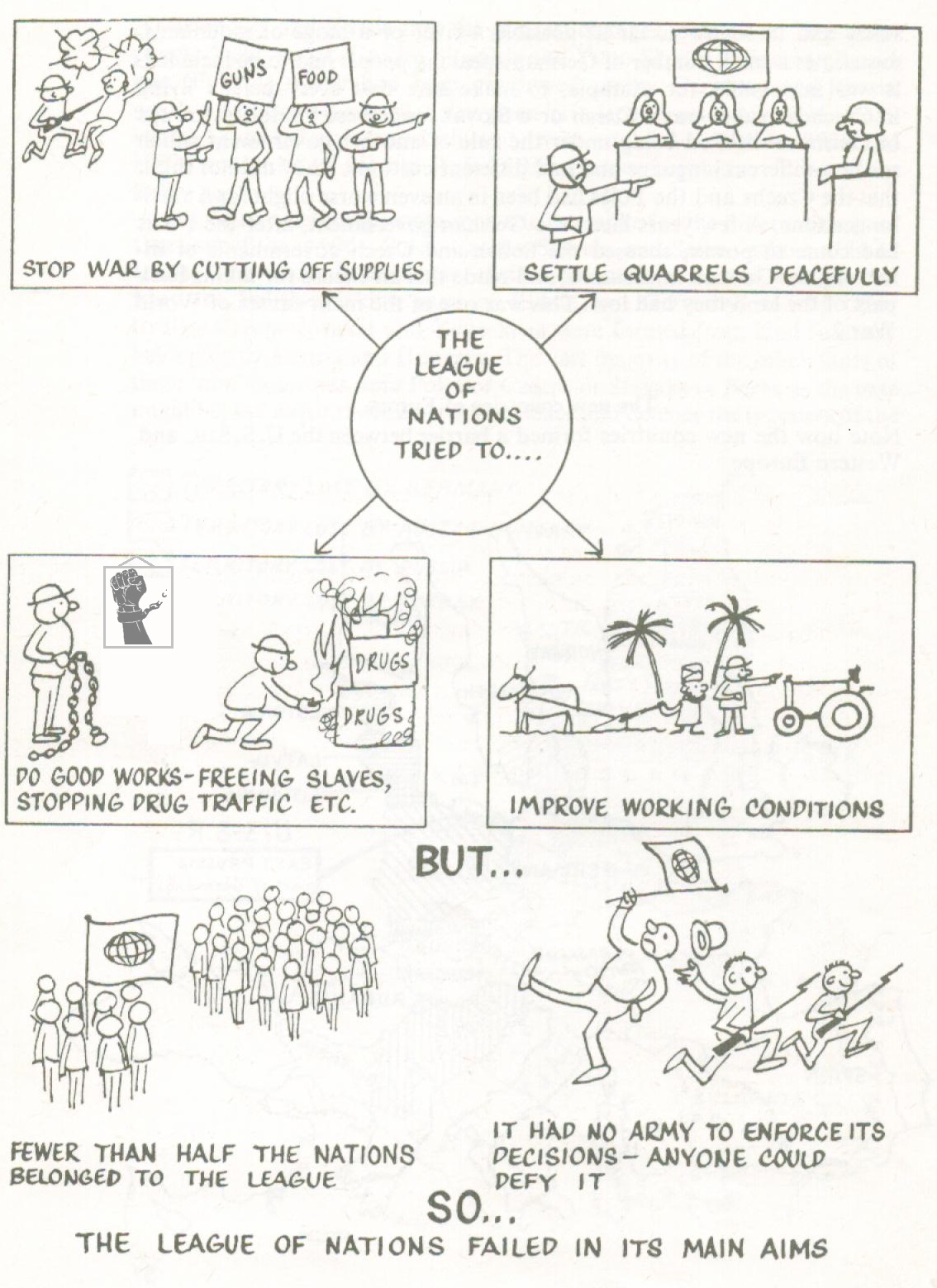
One very good idea did, however, come from the conference. The statesmen were determined to try to stop war for ever. Led by President Wilson they set up a kind of international club called the League of Nations with its headquarters in Geneva.
About forty countries joined immediately, and it was hoped that if one member
country had a quarrel with another, instead of going to war, both would send
representatives to the League to try to settle the quarrel peacefully by
discussion. If one nation did declare war on another all member nations
would be urged to stop trading with the invading country until lack of supplies
should bring fighting to an end.
Although its main aim was to maintain peace, the League tried to help in many other ways.
It had an international court to which nations could bring shipping, fishing and
other disputes for settlement; it did good work in freeing slaves, in stopping
much of the drug traffic in opium, and in improving working conditions in less
advanced countries.
Unfortunately, fewer than half the countries in the world belonged to the League. Russia did not join until 1934, America — one of the most powerful countries in the world — was not a member, while others came determined to upset it. The League had no army to enforce its decisions, so that any nation wishing to defy it could do so without fear. However, for a few years the League seemed to be working well, and did indeed, stop a few small wars.
In the end it became obvious that the countries were too selfish and the most
important part of the League's work — keeping peace — failed.
QUESTIONS
1. What was the main purpose of the League of Nations?
2. How did the League try to stop wars?
3. Why did the League fail in its main task?
|